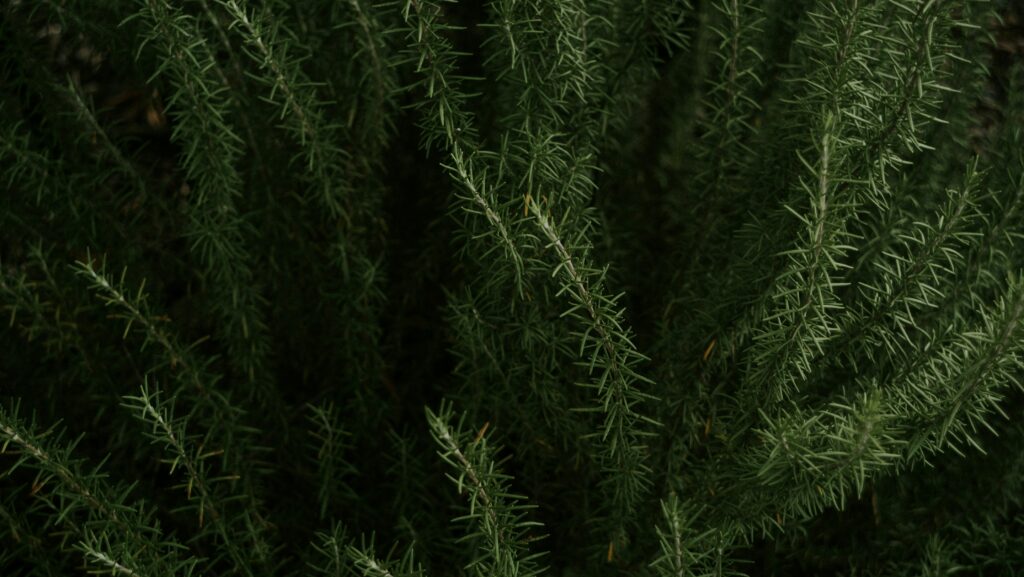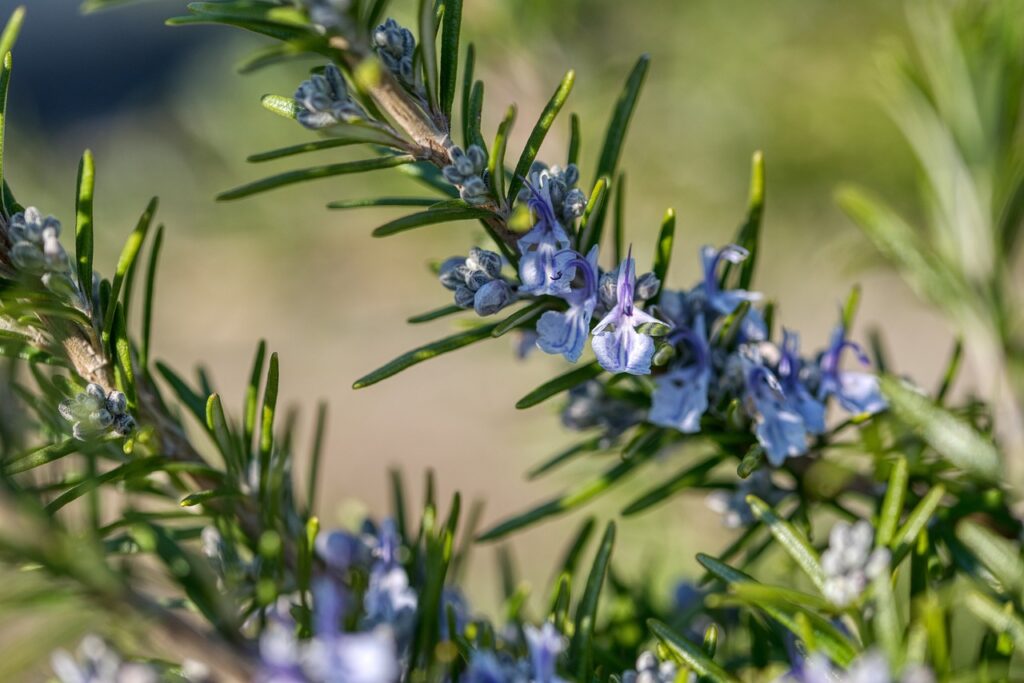Rosmarinic acid is a compound naturally found in several medicinal plants. Highly valued for its numerous therapeutic and antioxidant properties, it is increasingly used in the cosmetics, nutrition, food , and health industries. This article takes a detailed look at this powerful antioxidant, its benefits, extraction methods, and its role in various sectors.
1. Introduction to Rosmarinic Acid
1.1 What is rosmarinic acid?
Rosmarinic acid is a phenolic compound, a derivative of hydroxycinnamic acid, found in many plants in the Lamiaceae family, including rosemary (Rosmarinus officinalis), mint, sage, and thyme. It was first isolated from rosemary, hence its name. This compound is widely recognized for its antioxidant, anti-inflammatory, antiviral, and antibacterial properties, making it a popular ingredient in various industries, including cosmetics, healthcare, and food.
1.2 Importance of rosmarinic acid in different sectors
Rosmarinic acid is used for several applications due to its beneficial effects on human health. In the cosmetics industry, it is often used to protect the skin from free radical damage, prevent the signs of aging, and soothe skin irritations. In the health field, this compound plays a role in protecting cells from inflammation and fighting viral infections. Finally, in the food industry, rosmarinic acid is valued for its role as a natural preservative due to its antioxidant properties, thus extending the shelf life of food.
1.3 Antioxidant and anti-inflammatory properties
The antioxidant properties of rosmarinic acid are among the most studied. By neutralizing free radicals, this compound helps prevent cellular damage that can lead to chronic diseases such as cancer, cardiovascular disease, and neurodegenerative diseases. Its anti-inflammatory properties help reduce inflammation in the body, making it a valuable ally in managing joint pain and chronic inflammatory diseases such as arthritis. Rosmarinic acid also inhibits certain enzymes linked to the inflammatory response, such as cyclooxygenase (COX), thereby reducing the production of pro-inflammatory substances.
2. What is rosmarinic acid?
2.1 Definition and chemical characteristics
Rosmarinic acid is an organic molecule classified as a phenolic acid. Its molecular formula is C18H16O8, and it typically appears as a yellow or brownish crystalline powder. This molecule is known for its exceptional antioxidant activity, meaning it is capable of neutralizing free radicals, unstable molecules responsible for cellular damage. Its ability to act against oxidation makes it a valuable molecule for combating the aging of cells and tissues.
2.2 Origin and natural occurrence
Rosmarinic acid is primarily found in plants of the Lamiaceae family, but it is also found in other plant families such as Boraginaceae. Some of the best-known plant sources include rosemary, thyme, mint, sage, and lemon balm. Rosemary (Rosmarinus officinalis) is often cited as the plant richest in rosmarinic acid, and the compound is named after it. Plants containing this molecule are often used in herbal medicine and in the preparation of natural products for their therapeutic properties.
2.3 Biological properties of rosmarinic acid
Rosmarinic acid possesses a wide range of biological properties that make it a highly interesting compound for natural medicine and the pharmaceutical industry. In addition to its antioxidant properties, it has also demonstrated anti-inflammatory, antiviral, and antibacterial effects. It works, in particular, by inhibiting the enzymes responsible for the production of pro-inflammatory molecules, thus helping to reduce inflammatory responses in the body. These properties make it an ideal candidate for the development of treatments aimed at managing joint pain, skin conditions, and certain infectious diseases.
2.4 Applications in the cosmetic and food industries
In the cosmetics industry, rosmarinic acid is used for its ability to protect the skin from external aggressions and delay the appearance of signs of aging. It is commonly incorporated into creams, serums, and other skincare products to combat oxidative stress in the skin. In the food sector, it is used as a natural additive to protect foods from oxidation processes, particularly fats and oils, thus extending their shelf life without resorting to synthetic preservatives.

3. Natural origin of rosmarinic acid
3.1 Does rosmarinic acid come from rosemary?
The very name rosmarinic acid refers to its discovery in rosemary (Rosmarinus officinalis). Indeed, this plant is one of the richest sources of this compound, widely used in herbal medicine for its many benefits. However, it's important to note that rosemary isn't the only plant to contain rosmarinic acid. Other aromatic and medicinal plants, such as sage, thyme, mint, and lemon balm, are also rich in it.
3.2 Other sources of rosmarinic acid
Besides rosemary, many other plants contain significant concentrations of rosmarinic acid. These plants primarily belong to the Lamiaceae family, which includes herbs widely used in cooking and traditional medicine. Thyme (Thymus vulgaris), for example, is another important source of this compound, as is mint (Mentha piperita), which is widely used in the production of essential oils. Lemon balm (Melissa officinalis), known for its calming and stress-relieving properties, is also a notable source of rosmarinic acid.
3.3 Differences in concentration among plants
The concentration of rosmarinic acid varies depending on the plant and its growing environment. For example, rosemary is one of the plants that contains the most rosmarinic acid, but other factors such as climate, soil, and growing method can influence the amount of rosmarinic acid produced by a plant. Under certain conditions, plants such as lemon balm or sage can even exceed rosemary in terms of rosmarinic acid concentration, which opens the door to a variety of uses for these plants depending on specific industry needs.
4. Scientific and molecular data
4.1 Chemical structure of rosmarinic acid
Rosmarinic acid is a phenolic acid whose complex molecular structure gives it its bioactive properties. Its chemical formula allows it to interact with free radicals and neutralize their harmful effects on cells. The presence of hydroxyl and carboxyl groups in its structure promotes this powerful antioxidant activity, making it effective in protecting tissues against oxidative stress.
4.2 Physicochemical properties
Rosmarinic acid is a hydrophilic molecule, meaning it is soluble in water and some organic solvents such as ethanol and methanol. Its ability to dissolve in different media makes it a versatile molecule for various applications, particularly in the preparation of creams and dietary supplements. Its melting point is between 171 and 175°C, demonstrating relative thermal stability, although its properties can degrade under prolonged exposure to heat or light.
4.3 Laboratory analysis methods
Rosmarinic acid analysis is essential to ensure the quality and purity of products containing it. One of the most commonly used techniques is HS-GC-MS (Headspace Gas Chromatography-Mass Spectrometry) screening for the analysis of volatile compounds. This method allows for the quantification of rosmarinic acid at very precise levels, with a limit of quantification (LOQ) ranging from 0.1 to 10 mg/L, depending on the sample. Samples must be taken on waterproof and inert supports to ensure the integrity of the analytical results.
4.4 Sampling techniques
In laboratory analyses, it is essential to follow strict protocols for sampling substances containing rosmarinic acid. Samples must be collected in airtight, inert containers to avoid contamination or degradation of the compound. The in-house method used by the laboratories guarantees the accuracy and reproducibility of results, essential for sectors such as cosmetics and nutraceuticals.
Are you looking for an analysis?

5. How to extract rosmarinic acid?
5.1 Solvent extraction
Rosmarinic acid is typically extracted from plants such as rosemary or lemon balm using polar solvents such as ethanol or methanol. This classic method involves crushing the plant to release the active compounds, which are then dissolved in the solvent. This process is followed by a filtration step to separate the solids from the liquid, which contains the rosmarinic acid.
5.2 Supercritical fluid extraction (CO₂)
A newer, more environmentally friendly method is supercritical fluid extraction using carbon dioxide (CO₂). This technique uses CO₂ at high pressure and temperature to extract rosmarinic acid, without the use of traditional chemical solvents. It has the advantage of being non-toxic and producing extracts of very high purity. This method is particularly popular in the cosmetics and nutraceutical industries due to its low environmental footprint.
5.3 Comparison of extraction methods
Solvent extraction is often more economical and easier to implement on a large scale, but it can leave chemical residues in the final product, which is not always desirable. In contrast, supercritical fluid extraction, although more expensive, offers purer, residue-free extracts. The choice of method therefore depends on purity requirements and the area of application. The pharmaceutical and cosmetic industries, which require high-quality extracts, often favor supercritical CO₂.
6. Applications of Rosmarinic Acid
6.1 Uses in cosmetics
Rosmarinic acid is increasingly used in cosmetic products for its antioxidant properties. It helps protect the skin from free radical damage, which is responsible for premature skin aging. Creams, serums, and lotions incorporating this compound are often intended to reduce the visible signs of aging while soothing skin inflammation and irritation. Additionally, its antimicrobial properties make it an effective ingredient in products designed to prevent acne and skin blemishes.
6.2 Rosmarinic acid in nutraceuticals
In the dietary supplement industry, rosmarinic acid is used for its anti-inflammatory and antioxidant properties. It helps protect the body against chronic diseases related to oxidative stress, such as cardiovascular and neurodegenerative diseases. Additionally, its beneficial effects on cognitive function and reducing joint inflammation make it popular in products designed to improve overall health and well-being.
6.3 Role in feeding and preservation
Rosmarinic acid is also used as a natural additive in the food industry. Its antioxidant properties help extend the shelf life of foods, especially products containing fats and oils, by protecting them from oxidation. In addition to its effectiveness, this natural antioxidant is valued for its non-toxicity and safe use in food products, thus replacing synthetic preservatives.

7. Is rosmarinic acid safe?
7.1 Toxicological studies and safety of use
Numerous scientific studies have evaluated the safety of rosmarinic acid in various applications, including food and cosmetics. It is considered non-toxic at recommended doses and has shown no significant side effects during prolonged use. Acute and chronic toxicity tests have confirmed that rosmarinic acid is safe for use in dietary supplements and cosmetic products.
7.2 Limits of use according to sectors
In cosmetic products, European regulations set concentration thresholds to ensure the safe use of rosmarinic acid. Similarly, in the food industry, its use is strictly regulated to ensure consumer safety. Companies must respect these limits to avoid any potential risk of overdose or allergies. Product validation by certified laboratories, according to ISO 17025 and COFRAC standards, is essential to ensure compliance.
8. Rosmarinic acid analysis laboratories
8.1 Importance of laboratory analyses
Rosmarinic acid, as an active ingredient used in various industries, requires rigorous laboratory testing to ensure its quality, purity, and compliance with applicable standards. These tests ensure that products containing rosmarinic acid are safe and effective, whether they are dietary supplements, cosmetics, or food preservatives. Sample traceability is essential for optimal analytical data management.
8.2 Standards and certifications
Laboratories that perform rosmarinic acid analysis must be certified according to international standards, such as ISO 17025, to ensure technical competence. In France and Europe, COFRAC certification is also required to ensure that analyses meet the highest quality standards. Laboratories specializing in the analysis of phenolic compounds use validated methods such as liquid chromatography (HPLC) to quantify rosmarinic acid accurately and reliably.
8.3 Advanced analysis methods
Laboratories use several analytical techniques to detect and quantify rosmarinic acid in complex matrices. In addition to HPLC, techniques such as mass spectrometry (MS) or gas chromatography (GC) are also commonly used. These methods allow for detailed analysis, even at very low concentrations, ensuring that finished products meet purity and potency criteria.




